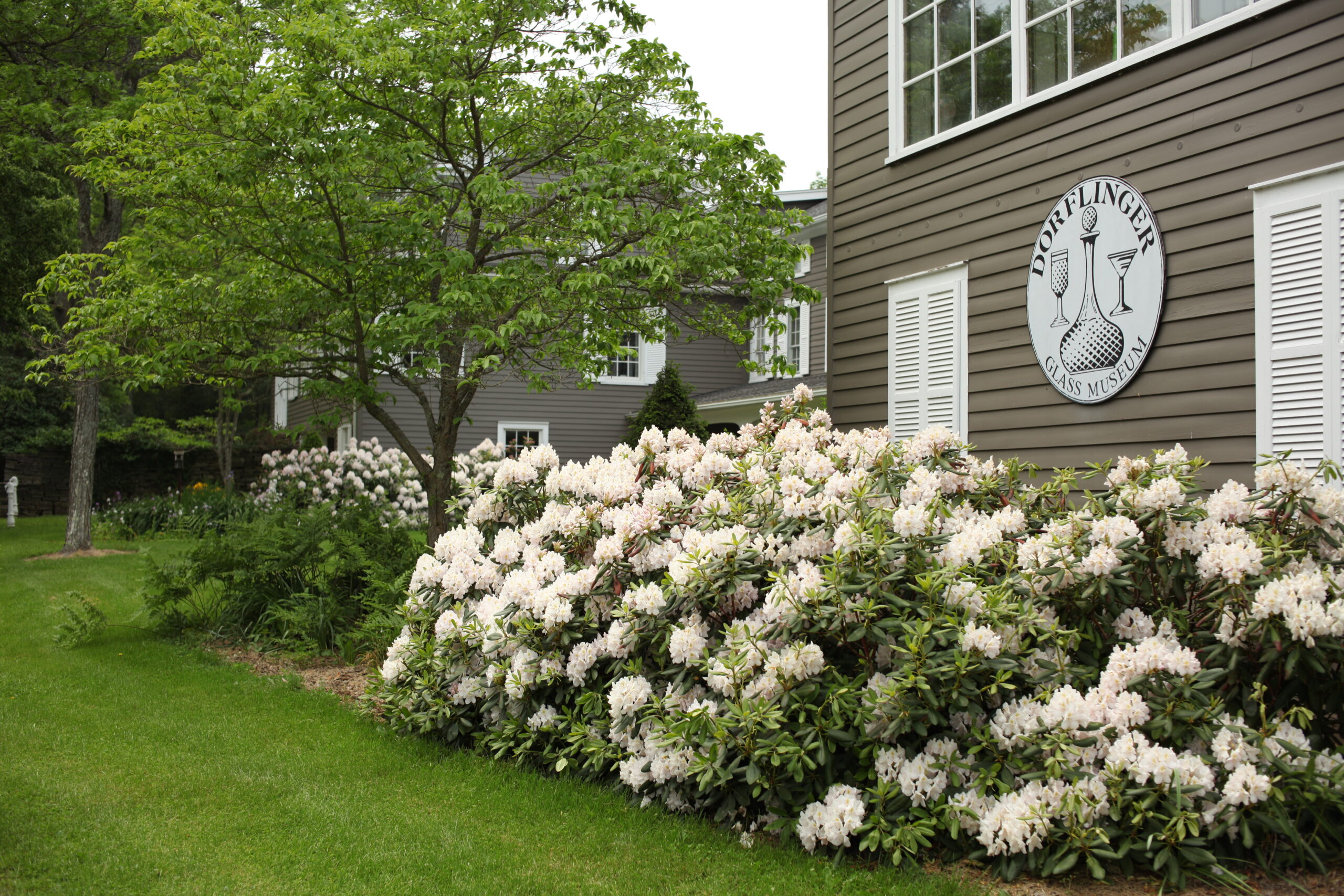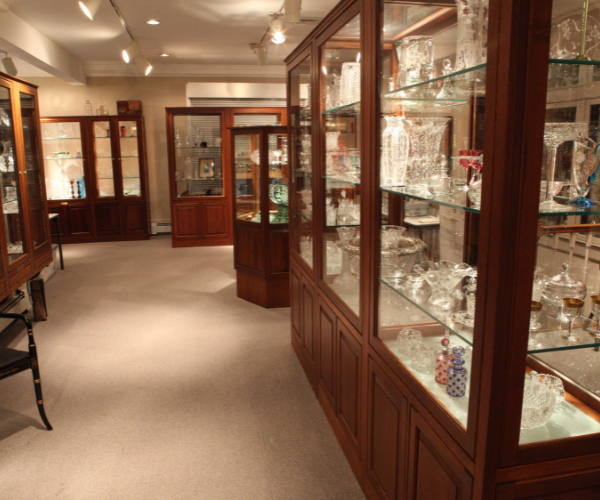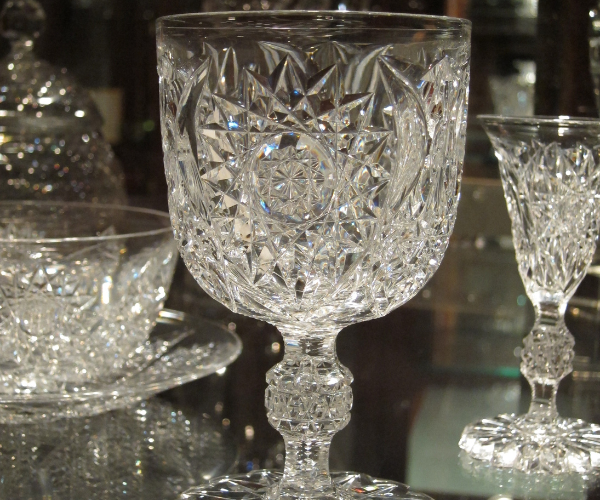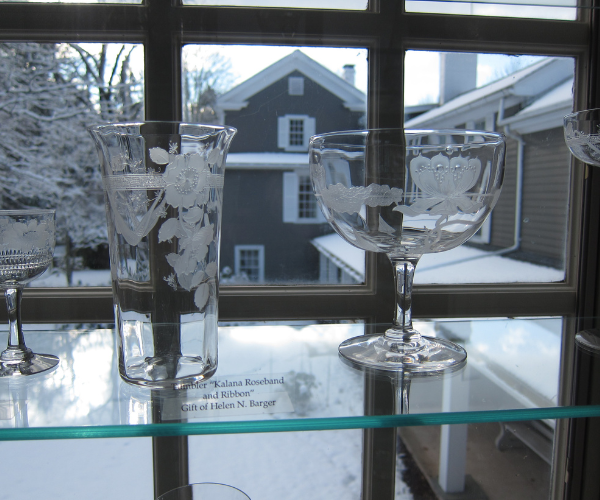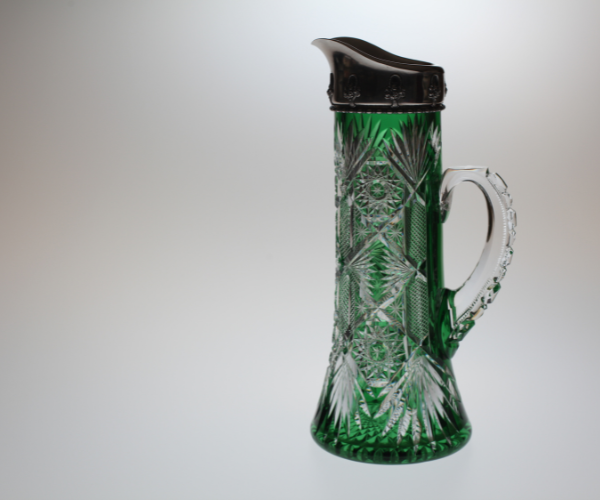Dorflinger Glass Museum
Come Visit
The museum is home to one of the nation’s largest collection of American brilliant-cut Dorflinger glass, all displayed in the home of the founder. Come see more than 1,000 pieces of cut, engraved, etched, gilded and enameled Dorflinger crystal and glass.
Suggested Donation when visiting:
Adults: $5.00
Members & Seniors (55+): $4.00
Ages 6 to 18: $2.00
Dorflinger Glass Museum History
The Beginning
Beginning in the 1860s, Christian Dorflinger transformed White Mills from a sleepy hamlet on the banks of the Lackawaxen River into a bustling industrial center. For more than half a century the Dorflinger Glass Works produced exquisite cut lead crystal that graced many of America’s finest tables, including those of several White House administrations.
The Dorflinger-Suydam Wildlife Sanctuary acquired its first piece of Dorflinger glass in September 1981 as a gift from Agnes Houth Baisden. Mrs. Baisden gave a Marlboro pattern decanter in memory of her father, Fred Houth, who had worked in the Dorflinger factory. After that many glass acquisitions followed and were held in a vault at an area bank as there was no museum to display them.
The Forming of the Museum
In 1986, the Sanctuary’s trustees launched a campaign to construct a museum on the Sanctuary grounds, raising $150,000 led by William Adams and Daniel O’Neill. By the fall of 1987, the community’s generous support exceeded the goal, and glass expert Helen N. Barger donated over 300 pieces of Dorflinger glass to the budding museum.
Winter of 1987 saw the appointment of the renowned Dorflinger expert Ray LaTournous as the curator of the museum. LaTournous’s tasks were developing the collection and training volunteers, and the building’s construction completed in 1988. The glass museum opened to the public on May 20, 1989.
Acting curator Mark Eggenberger displayed glass from Dorflinger family members June Hardy and Jane Beers in 1991. Henry J. Loftus, Jr. took over the curatorship in 1992 and holds the position today. With over 1,000 pieces, the Dorflinger Glass Museum has one of the largest collections of Dorflinger glass in the country.
Volunteers staff both the museum and the museum shop, which is an essential source of revenue. Admissions and museum shop sales provide the primary funds for the museum. Nevertheless, the museum must generate enough revenue each year to support its costs. The Sanctuary supports the museum through General Manager Tom Dein’s services, who maintains the building and grounds.
The museum requires funds for educational programming, research, and collection development and care. However, the Sanctuary’s support is indispensable for the museum’s operation.


